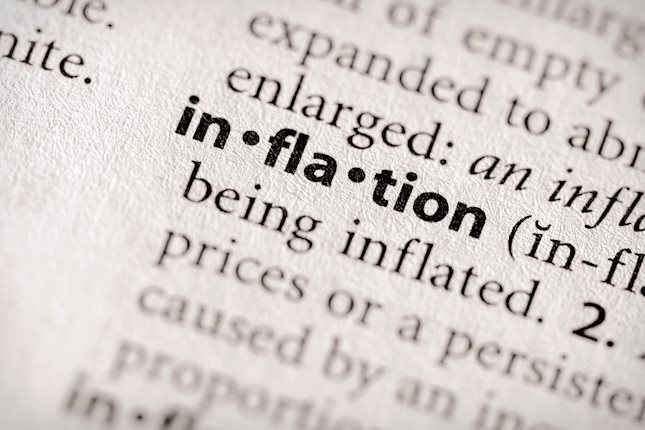In focus today
Today's most important data release will be the US October CPI, where we expect inflation to slow down in both headline (+0.1% m/m SA, from +0.2%) and core (+0.2% m/m SA, from +0.3%) terms. In annual terms, headline inflation could still appear to accelerate due to base effects stemming from a low reading a year ago (headline forecast 2.5% y/y, from 2.4%).
In the euro area, focus turns to industrial production data for September, which will show how actual production fared. The data is interesting as hard data has been better compared to PMIs in the manufacturing sector.
In Sweden, Riksbank minutes will be released at 09.30 CET. Since the decision to cut by 50bp was unanimous, all board members appear to stand behind the message in the monetary policy update that indicated a weaker real economy that led to the jumbo cut. Still, we look for any cracks in the façade and expect Riksbank to move more slowly going forward.
Economic and market news
What happened yesterday
In the US, the NFIB's small business optimism index showed a slight improvement in overall sentiment in October, increasing to 93.7 from 91.5. General uncertainty reached an all-time-high ahead of the election, but we have seen similar movements ahead of previous elections as well. Labour market indicators were little changed, while job openings and hiring plans remained slightly below pre-pandemic levels. Similarly, inflation indicators saw only minor changes, with firms' "price plans"-index staying just slightly above pre-covid levels. Overall, US businesses remain in good shape especially now that political uncertainty is set to gradually ease.
In politics, the Republicans moved closer to clinching the House, with Edison Research projecting another race win, bringing them to at least 216 seats - just two seats short of the 218-majority threshold. Winning the House would complete a Republican sweep, giving Trump full leverage to proceed with his agenda. As noted earlier this week, this scenario could widen the budget deficit, public debt, and potentially lead to renewed inflationary pressures.
In the euro area, Olli Rehn, Finnish central bank chief, said that the ECB is likely to continue cutting rates, potentially reaching the neutral level in H1 2025. While the direction is clear, Rehn highlighted that the pace and size of cuts will depend on the inflation outlook, the dynamics of underlying inflation and monetary policy transmission. We believe that November PMIs will weigh more heavily than usual on the size of the December ECB rate cut, where we project a 25bp cut.
In Germany, the ZEW indicator declined in November, with the downtick being broad-based. The assessment of the current situation declined further to -91.4 (cons: -85.0, prior: -86.9), its lowest level since May 2020. Similarly, the expectations component fell to 7.4 (cons: 13.2, prior: 13.1), indicating that last month's uptick was temporary. It shall be very interesting to see whether PMIs and Ifo for November mirror this development as was the case in October when all measures improved. Overall, we remain negative on the economic outlook for Germany as the manufacturing sector continues to record falling activity. A clear risk for the growth outlook is a significant deterioration in the labour market, which is weakening as visible in Q3 where employment declined for the first time since Covid, and an increasing number of companies are using short-term working schemes.
On the political front, the leaders of Germany's major parties have agreed to host the snap elections on 23 February 2025. Later today, German Chancellor Scholz is expected to announce the date of a vote of confidence in the government, which likely could happen on 16 December. For more details regarding the political disarray in Germany, please see Research euro area: Fiscal policy to slow growth in 2025 - but mind the RFF, 7 November.
In the UK, BoE Chief Economist Huw Pill (hawk) emphasized that the central bank's efforts to tame inflation are not over, given persistent underlying inflation momentum. Pill highlighted Tuesday's labour market data, which showed continued sticky wage growth, underscoring that BoE still has work to do on inflation. The labour market report also showed the unemployment rate ticking higher to 4.3% in the most recent three-month period, slightly above consensus of 4.1% and the previous figure of 4.0%. However, this is related to the very low June figure of 3.7% dropping out in September. Given that the measure is also based on the low-quality LFS data, focus should be on wage growth. Looking ahead, next week's October inflation release is key, where we will likely see a slight increase due to energy price adjustments. We remain positive on GBP, targeting EUR/GBP at 0.81 in 6M.
In commodities space, OPEC lowered its forecast for global oil demand growth for 2024, while also trimming its 2025 projections, owing to weaker activity in China and other Asian markets. The cut marks the cartel's fourth consecutive downward revision in the 2024 outlook. For the remainder of 2024 we expect the oil price to climb higher towards USD80/bbl.
Equities: Global equities declined yesterday, led by significant selloffs in Europe and Asia. Some of the "Trump trades" are still ongoing, but as mentioned previously, also some China-related rotations are going on, with materials sectors experiencing the most significant losses across indices. Notably, despite the downturn in global equities, yields were higher, cyclicals outperformed, and the VIX moved slightly lower. This suggests that the market is not fearful of the growth outlook but is instead adjusting to a new reality. In the US yesterday: Dow -0.9%, S&P 500 -0.3%, Nasdaq -0.1%, and Russell 2000 -1.8%. Most Asian markets are lower this morning, as are most European and US futures.
FI: The US-German yield divergence continued to 206bp on the 10y point, which is 6bp wider than on Monday. European real rates rose markedly with e.g. the 5y5y EUR real swap rate up 6bp on the day.
FX: US yields continued to climb, diverging substantially from euro area rates and pushed EUR/USD temporarily below 1.06 for a new year-low. Scandies showed resilience versus the euro but lost out against the greenback. The Chinese yuan also weakened against the USD as an reflection of the anticipation of new US tariffs hitting China over the next year.
This publication has been prepared by Danske Bank for information purposes only. It is not an offer or solicitation of any offer to purchase or sell any financial instrument. Whilst reasonable care has been taken to ensure that its contents are not untrue or misleading, no representation is made as to its accuracy or completeness and no liability is accepted for any loss arising from reliance on it. Danske Bank, its affiliates or staff, may perform services for, solicit business from, hold long or short positions in, or otherwise be interested in the investments (including derivatives), of any issuer mentioned herein. Danske Bank's research analysts are not permitted to invest in securities under coverage in their research sector.
This publication is not intended for private customers in the UK or any person in the US. Danske Bank A/S is regulated by the FSA for the conduct of designated investment business in the UK and is a member of the London Stock Exchange.
Copyright () Danske Bank A/S. All rights reserved. This publication is protected by copyright and may not be reproduced in whole or in part without permission.
Recommended Content
Editors’ Picks

EUR/USD stays vulnerable near 1.0600 ahead of US inflation data
EUR/USD remains under pressure near 1.0600 in European trading on Wednesday. The pair faces headwinds from the US Dollar upsurge, Germany's political instability and a cautiou market mood, as traders look to US CPI data and Fedspeak for fresh directives.

GBP/USD trades with caution below 1.2750, awaits BoE Mann, US CPI
GBP/USD trades with caution below 1.2750 in the European session on Wednesday, holding its losing streak. Traders turn risk-averse and refrain from placing fresh bets on the pair ahead of BoE policymaker Mann's speech and US CPI data.

Gold price holds above $2,600 mark, bulls seem non committed ahead of US CPI
Gold price staged a modest recovery from a nearly two-month low touched on Tuesday. Elevated US bond yields and bullish USD cap gains for the non-yielding XAU/USD. Traders now look forward to the key US Consumer Price Index report a fresh impetus.

US CPI data set to confirm inflation ramped up in October as traders pare back Fed rate cut bets
As measured by the CPI, inflation in the US is expected to increase at an annual rate of 2.6% in October, a tad higher than the 2.4% growth reported in September. The core annual CPI inflation, excluding volatile food and energy prices, will likely remain at 3.3% in the same period.

Forex: Trump 2.0 – A high-stakes economic rollercoaster for global markets
The "Trump trade" is back in full force, shaking up global markets in the aftermath of the November 5th U.S. election. This resurgence has led to substantial shifts in both currency and bond markets, with the U.S. dollar index (DXY) jumping 2.0% + since election day.

Best Forex Brokers with Low Spreads
VERIFIED Low spreads are crucial for reducing trading costs. Explore top Forex brokers offering competitive spreads and high leverage. Compare options for EUR/USD, GBP/USD, USD/JPY, and Gold.